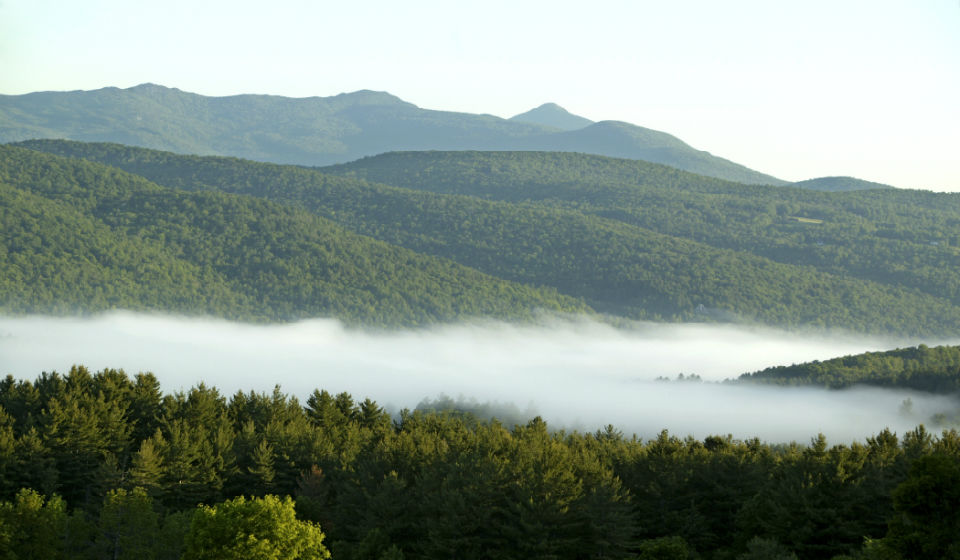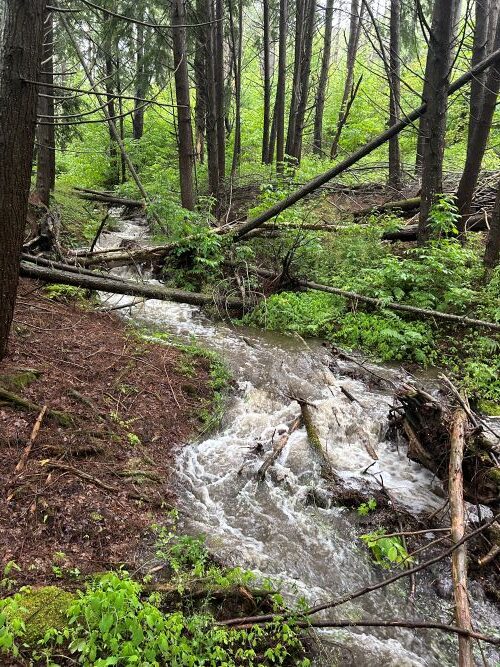Managing Water in the Woods: Slow it, Spread it, Sink it, Store it
If you’ve spent any time managing land—or even just walking it after a good rain—you know that water doesn’t always go where you want it to. It rushes down skid trails, cuts gullies through logging roads, pools in the wrong places, and carries off soil and nutrients along the way.
That’s where a simple idea comes in: Slow it. Spread it. Sink it. Store it.
Originally developed in the context of urban stormwater management, this phrase is gaining ground among foresters and woodland owners who are thinking more deeply about how water moves through forested landscapes. And for good reason—how we manage water is critical to the long-term health of our woods.
So, what does it mean?
Let’s break it down:
-
Slow it – Water picks up speed and force as it moves downhill. By slowing down that flow—using features like water bars, broad-based dips, strategically placed logs, or brush and maintaining vegetation—you reduce erosion and give the forest floor more time to absorb water.
-
Spread it – Instead of letting water concentrate in ruts or ditches, the goal is to disperse it across the land. When water spreads out, it has less power to do damage, and more surface area to soak in slowly over time. Leaving woody debris on the forest floor and whenever possible avoiding straight, steep roads and trails can help.
-
Sink it – Once slowed and spread, water can sink into the soil. Healthy forest soils, rich with organic matter and tree roots, are excellent at absorbing and holding water. That’s good for trees, understory plants, and wildlife. Encouraging organic matter accumulation by leaving leaf litter and woody debris to feed soil organisms can improve water-holding capacity.
-
Store it – Forests naturally store water in many forms—soil, wetlands, woody debris, and even tree roots. By protecting or enhancing these natural storage systems, we support resilience during both heavy rain events and dry spells.
Why it matters in Vermont woodlands
With more frequent and intense storms, many Vermont landowners are noticing changes in how water behaves on their land. Culverts wash out. Trails become muddy channels. Roads require constant repair. But it’s not just an infrastructure problem—it’s a forest health issue, too. Erosion can strip away valuable topsoil, damage root systems, and disrupt the delicate balance that supports forest regeneration.
Using the “Slow, Spread, Sink, Store” framework doesn’t require an engineering degree or a big budget. It just means thinking intentionally about how to work with—not against—water. A few well-placed water bars or a shift in how you lay out a trail can make a big difference over time.
How to get started
-
Walk your woods after a rain. Where is water flowing? Where is it collecting? Are there signs of erosion?
-
Look at your infrastructure. Are culverts properly sized? Do roads have adequate drainage? Are trails shedding water or channeling it?
-
Talk to your forester. Vermont’s licensed consulting foresters and FPR’s county foresters are great resources for planning improvements that support both forest health and access.
-
Think long-term. Managing water is part of managing for climate resilience. Healthy, intact forests help protect downstream communities and ecosystems from flooding, while holding onto moisture during drought.
A final thought
Water will always find a way—but we can help it take the gentler path. When we slow it, spread it, sink it, and store it, we’re not just protecting trails and roads. We’re investing in the long-term health of our woods and helping our neighbors downstream.



